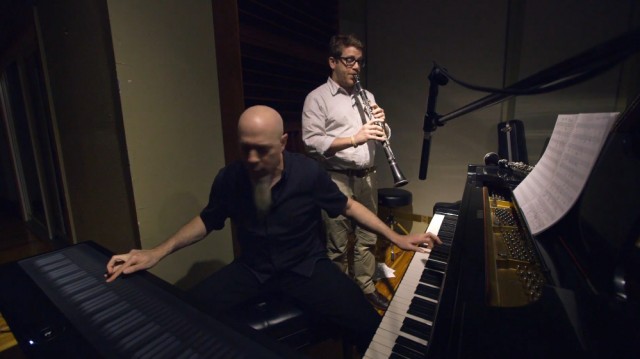From Rush to the classical clarinet to rethinking the keyboard interface, a lovely new film by Michael Shane explores the relationship between music and technology, and the philosophy behind new musical inventions.
Two New York-based characters figure prominently in that investigation. There’s Martin Yee, the drum tech, who talks about humans and drums. (Sadly, we don’t get into the question of acoustic technology – that’s something I hope to cover in upcoming reports, both in transforming and augmenting the drum kit, and re-designing the acoustic piano.)
Then, there’s the ubiquitous keyboardist Jordan Rudess, whom I think puts on one of the best demos yet of the Roli Seabord Grand piano. The Roli story is timely, as investors are willing to bet big on instrumental innovation. The company just got a whopping US$12.8 million in funding. I have to admit, I’m not certain what the market potential is for strange, new keyboards. But Jordan, while he chooses timbres that sound fairly conventional (fake eletric guitar) does display the ability to use the instrument as a virtuoso.
In a way, though, it’s the thoughtful clarinet bookends – and a lovely duet with Jordan – that provide the best food for thought. Thanks to The Verge for putting this together, and I hope you guys continue to look at music technology in your coverage.
The closing thesis: “technology makes noise; musicians turn it into music.”
That’s a nice phrase, and perhaps true once the instrument is in the musician’s hands. But incorporating the creation of the instrument, I would argue the relationship is subtler than that. The sound of an acoustic piano, for instance, is a form of design that results in a certain sound. That noise itself has musical intent; compositional imagination is partly in the mind of the instrument builder and embodied in the instrument. The same is true in software and synthesizers. The act of being a musician is partly technological, whether honing your own physical abilities through practice or tuning, modifying, and even designing the instrument yourself.
The notion that these lines are blurred, not a clear duet between separate entities, of course, is the underlying thesis of this entire site – in case you hadn’t noticed.
But watch for yourself:
